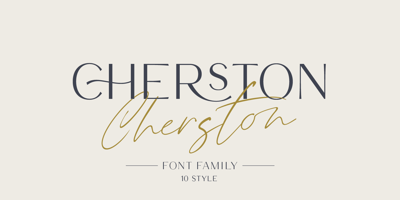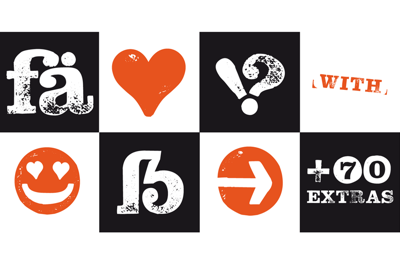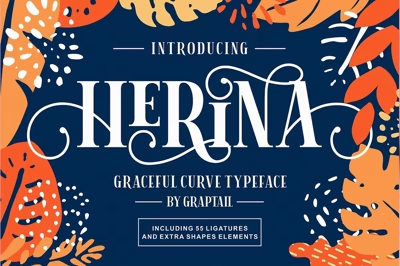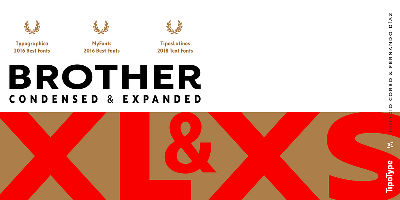Retro Display Fonts Bringing Back the 70s and 80s Vibes
Retro Display Fonts Bringing Back the 70s and 80s Vibes
The nostalgic revival of 1970s and 1980s design aesthetics has become one of the most powerful cultural forces shaping contemporary American visual culture, with retro display fonts leading this aesthetic revolution across industries from entertainment to fashion to technology. These decades, once dismissed as design disasters, now represent authentic creativity and bold expression that resonates deeply with audiences seeking alternatives to minimalist perfection and algorithmic uniformity.
American consumers, particularly millennials and Gen Z, increasingly gravitate toward retro aesthetics that suggest authentic human creativity over AI-generated content, handcrafted uniqueness over mass production, and bold expression over safe corporate messaging. This cultural shift creates unprecedented opportunities for businesses and designers willing to embrace retro typography that captures the optimistic energy and creative confidence of America's most colorful design decades.
This comprehensive guide explores the best retro display fonts that authentically capture 70s and 80s vibes, examining their cultural context, psychological appeal, and strategic applications for contemporary American brands and creative projects.
The Cultural Renaissance of Retro Typography
Nostalgia Marketing and Emotional Connection
The American retro revival represents more than aesthetic preference – it reflects deep cultural desires for optimism, authenticity, and human creativity that 70s and 80s design embodied before digital standardization and corporate minimalism dominated visual culture.
Nostalgia marketing leveraging retro typography consistently outperforms contemporary alternatives in engagement metrics, brand recall, and emotional connection among American consumers seeking authentic experiences in increasingly artificial digital environments.
The psychological power of retro fonts lies in their ability to trigger positive emotional associations with periods of American cultural optimism, economic prosperity, and creative experimentation that feel refreshing compared to contemporary uncertainty and digital fatigue.
Generational Appeal and Market Opportunity
Millennials, now America's largest consumer demographic, experienced 70s and 80s aesthetics through childhood pop culture, creating powerful emotional connections to retro design that influence purchasing decisions and brand loyalty throughout their peak earning years.
Gen Z consumers, despite lacking direct experience with these decades, embrace retro aesthetics as rebellion against the sterile digital environments they've known throughout their lives, viewing 70s and 80s design as authentic creativity worth celebrating and emulating.
This cross-generational appeal creates massive market opportunities for brands willing to embrace retro typography that speaks to both nostalgic millennials and authenticity-seeking Gen Z consumers across diverse American market segments.
Digital Fatigue and Analog Aesthetics
After decades of digital optimization and minimalist design trends, American consumers increasingly crave visual experiences that feel human, handcrafted, and emotionally expressive rather than algorithmically perfect.
Retro display fonts provide immediate visual relief from contemporary design uniformity while suggesting the creative confidence and optimistic energy that defined American culture during its most visually experimental decades.
The deliberate imperfections and bold character of retro typography create emotional warmth and human connection that contemporary minimalist fonts often cannot achieve, making retro aesthetics particularly powerful for brands seeking authentic customer relationships.
1970s Typography: Groovy Expression and Creative Freedom
Psychedelic and Experimental Aesthetics
The 1970s represented unprecedented creative freedom in American typography, with designers experimenting boldly with letterforms that prioritized expression over conventional readability, creating fonts that captured the decade's spirit of social change and cultural experimentation.
Righteous
This Google Font captures the essence of 1970s experimental typography with its distinctive character and slightly psychedelic influences that immediately transport viewers to the era of creative freedom and social change.
Cultural Context: Reflects the experimental spirit and creative confidence that defined 1970s American design and social movements Best Applications: Music festival graphics, vintage lifestyle brands, creative agency branding, nostalgic marketing campaigns Psychological Appeal: Suggests authentic creativity and bold self-expression
Fredericka the Great
Originally inspired by historical lettering but perfect for 70s aesthetic applications, this decorative font provides the ornate character and dramatic flair that characterized the decade's love for expressive typography.
Cultural Context: Captures the decade's appreciation for decorative arts and expressive design that broke from corporate modernism Best Applications: Vintage luxury brands, artistic projects, historical themes, sophisticated retro positioning Psychological Appeal: Projects artistic sophistication and creative heritage
Creepster
While designed for horror applications, Creepster's distorted character perfectly captures the experimental and unconventional typography that flourished during America's most visually adventurous decade.
Cultural Context: Represents the decade's willingness to experiment with unconventional design and challenge traditional aesthetic boundaries Best Applications: Alternative brands, experimental projects, countercultural messaging, artistic rebellion Psychological Appeal: Suggests nonconformity and creative independence
Earth Tones and Natural Aesthetics
The 1970s environmental movement influenced typography toward organic, natural feeling fonts that suggested harmony with nature and rejection of industrial corporate aesthetics.
Design Philosophy: 70s typography often embraced organic curves and natural feeling proportions that reflected the decade's environmental consciousness and rejection of rigid corporate design Color Palette Integration: These fonts work beautifully with earth tone color palettes including browns, oranges, and forest greens that defined 70s aesthetic sensibilities Contemporary Applications: Perfect for sustainable brands, organic products, wellness companies, and businesses emphasizing natural authenticity
1980s Typography: Neon Dreams and Digital Innovation
Synthwave and Cyberpunk Influences
The 1980s represented America's first encounter with digital aesthetics, creating typography that celebrated technological innovation while maintaining the human creativity and bold expression that defined the decade's optimistic futurism.
Orbitron
This futuristic sans-serif perfectly captures 1980s visions of technological progress and space-age innovation that defined the decade's optimistic relationship with digital technology and scientific advancement.
Cultural Context: Embodies the decade's excitement about technological progress and space exploration that influenced everything from movies to music to corporate design Best Applications: Technology brands, gaming companies, sci-fi projects, innovative startups, futuristic positioning Psychological Appeal: Suggests cutting-edge innovation and progressive thinking
Audiowide
Designed specifically to capture 80s aesthetic sensibilities, Audiowide provides the geometric precision and technological character that defined the decade's embrace of digital culture and electronic music.
Cultural Context: Reflects the period when American culture first embraced digital technology as creative tool rather than threatening replacement for human creativity Best Applications: Music industry, entertainment brands, gaming platforms, technology marketing, retro tech products Psychological Appeal: Combines technological sophistication with human creativity
Bungee
With its vertical emphasis and bold geometric character, Bungee captures the architectural confidence and vertical aspirations that characterized 1980s American design and urban culture.
Cultural Context: Represents the decade's architectural ambitions and urban confidence that celebrated American economic prosperity and technological achievement Best Applications: Urban brands, fashion companies, architectural firms, city-focused businesses, modern retro positioning Psychological Appeal: Projects confidence and urban sophistication
Neon Aesthetics and Electric Energy
The 1980s neon aesthetic created typography designed for illumination and electric energy that celebrated American consumer culture and entertainment industry glamour.
Visual Impact: 80s-inspired fonts work exceptionally well with neon color treatments and glow effects that recreate the decade's love for electric illumination and synthetic color palettes Entertainment Industry: Perfect for entertainment brands, nightlife businesses, gaming companies, and any business seeking to capture the decade's celebration of consumer culture Energy and Excitement: These fonts inherently suggest energy, excitement, and celebration that appeals to contemporary audiences seeking alternatives to subdued minimalist aesthetics
Contemporary Applications and Brand Strategy
Entertainment and Media Industries
The entertainment industry has embraced retro typography as powerful tool for creating emotional connection and differentiating content in crowded media landscapes where nostalgic appeal can determine commercial success.
Streaming Platform Differentiation: Netflix's "Stranger Things" demonstrates how retro typography can define entire entertainment properties while building massive cultural followings based on nostalgic authenticity Music Industry Revival: Contemporary artists across genres use retro typography to position themselves within authentic creative traditions while appealing to audiences seeking alternatives to algorithmic music discovery Gaming and Interactive Entertainment: Retro aesthetics provide immediate recognition and emotional connection for gaming experiences that celebrate creativity over photo-realistic perfection
Fashion and Lifestyle Brands
Fashion brands leverage retro typography to suggest authentic style heritage and creative independence that appeals to consumers seeking alternatives to fast fashion and mass-market uniformity.
Vintage Athletic Wear: Retro fonts perfectly complement the vintage athletic wear trend that celebrates American sports heritage and authentic athletic culture Independent Fashion Labels: Small fashion brands use retro typography to differentiate from corporate competitors while suggesting creative authenticity and individual style vision Lifestyle Product Positioning: Consumer products from craft beverages to artisanal goods use retro fonts to suggest quality craftsmanship and authentic brand heritage
Technology and Innovation Brands
Contemporary technology companies increasingly use retro typography to humanize digital products while celebrating the optimistic technological vision that defined America's introduction to personal computing.
Gaming Technology: Hardware and software companies serving gaming markets use retro aesthetics to connect with audiences that appreciate both technological innovation and authentic creative heritage Creative Software: Design and creative tools leverage retro typography to appeal to creative professionals who value both cutting-edge functionality and aesthetic authenticity Tech Startup Differentiation: Startups use retro aesthetics to differentiate from corporate minimalism while appealing to audiences seeking more human and expressive technology experiences
Implementation Strategies for Authentic Retro Design
Color Palette Integration
Retro display fonts achieve maximum impact when integrated with authentic color palettes that reinforce rather than compete with nostalgic aesthetic goals and emotional associations.
1970s Earth Tones: Combine retro fonts with browns, oranges, deep yellows, and forest greens that capture the decade's environmental consciousness and natural aesthetic preferences 1980s Neon Palettes: Use electric blues, hot pinks, bright purples, and neon greens that celebrate the decade's synthetic color innovation and technological optimism Contemporary Adaptation: Modern brands can adapt retro color principles while incorporating contemporary color psychology and accessibility requirements
Texture and Effects Application
Retro typography often benefits from texture treatments and visual effects that enhance nostalgic appeal while maintaining readability and contemporary functionality.
Vintage Texture Integration: Subtle paper textures, film grain, or printing artifacts can enhance retro authenticity without compromising digital performance or accessibility Neon and Glow Effects: 80s-inspired fonts work excellently with glow effects and neon treatments that recreate the decade's illuminated aesthetic sensibilities Gradient Applications: Both decades embraced gradient applications that can enhance retro fonts while creating contemporary visual interest and dimensional appeal
Scale and Hierarchy Considerations
Retro display fonts require careful attention to scale and hierarchy to maximize visual impact while ensuring practical communication effectiveness across diverse applications.
Large Format Applications: Retro fonts excel in large format applications where their distinctive character and nostalgic appeal can be fully appreciated and emotionally effective Digital Platform Optimization: Ensure retro fonts maintain character and readability across digital platforms where nostalgic appeal must compete with contemporary content for attention Brand System Integration: Develop comprehensive typography systems that use retro display fonts strategically while maintaining overall brand consistency and communication clarity
Psychology of Retro Typography Appeal
Authenticity in Digital Age
Retro typography appeals to contemporary American audiences seeking authentic creativity and human expression in increasingly artificial and algorithmic digital environments.
Human Craftsmanship: Retro fonts suggest individual creativity and human decision-making that appeals to audiences fatigued by AI-generated content and corporate design uniformity Creative Confidence: These fonts embody the creative confidence and optimistic experimentation that contemporary audiences associate with America's most culturally productive decades Emotional Warmth: Retro typography provides emotional warmth and personality that contemporary minimalist design often cannot achieve, creating stronger brand connections
Cultural Rebellion and Individual Expression
Retro aesthetics enable brands and individuals to express cultural rebellion against contemporary design conformity while celebrating periods of American creative independence and cultural confidence.
Anti-Corporate Aesthetics: Retro fonts provide alternatives to corporate minimalism that appeal to audiences seeking more expressive and individual brand relationships Creative Independence: These fonts suggest creative independence and individual vision that resonates with entrepreneurs and creative professionals seeking authentic self-expression Cultural Celebration: Retro typography celebrates periods of American cultural creativity and social progress that provide positive alternatives to contemporary cultural anxiety
Future Evolution of Retro Typography
Digital Integration and Modern Technology
Contemporary retro typography must balance nostalgic authenticity with modern technical requirements including responsive design, accessibility compliance, and cross-platform compatibility.
Variable Font Applications: Modern retro fonts may incorporate variable technology that enables authentic retro character while optimizing for contemporary technical requirements Animation and Motion Graphics: Retro fonts work excellently in animated applications that can enhance nostalgic appeal while meeting contemporary engagement expectations AR and VR Integration: Emerging technologies may enable retro typography experiences that combine nostalgic aesthetics with cutting-edge interactive capabilities
Cultural Evolution and Generational Change
As millennials and Gen Z continue driving American consumer culture, retro typography will likely evolve to reflect their specific cultural experiences and aesthetic preferences while maintaining authentic connections to 70s and 80s creative heritage.
Authenticity Standards: Future retro applications will likely face higher authenticity standards as audiences become more sophisticated about distinguishing genuine nostalgia from superficial trend following Cultural Integration: Retro typography may evolve to integrate contemporary cultural values including sustainability, inclusivity, and social responsibility while maintaining nostalgic appeal Global Influence: American retro aesthetics continue influencing global design culture, creating opportunities for international brand applications that celebrate American creative heritage
Retro display fonts provide powerful tools for creating emotional connection and cultural differentiation in contemporary American markets where audiences increasingly seek authentic alternatives to algorithmic perfection and corporate minimalism. The fonts and strategies outlined in this guide offer proven approaches for leveraging nostalgic appeal while achieving contemporary business objectives.
Success with retro typography requires understanding the cultural forces driving nostalgic appeal while implementing authentic aesthetic approaches that respect rather than exploit the creative heritage these fonts represent. Whether building entertainment brands or lifestyle businesses, retro display fonts can provide crucial advantages in creating memorable brand experiences that resonate with contemporary American audiences seeking authentic creativity and cultural connection.




